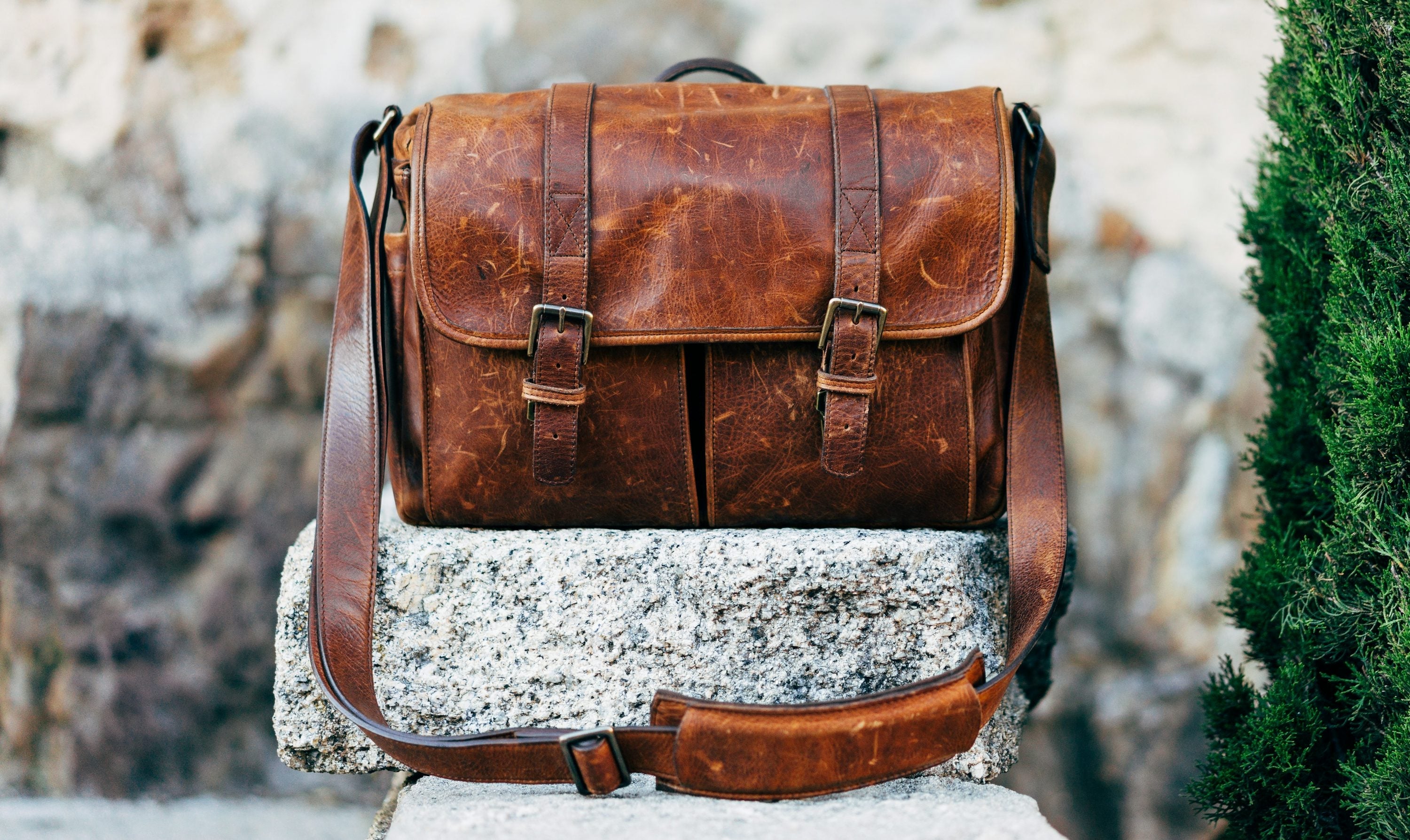
Vegan Leather vs Faux Leather
Steering through the world of leather alternatives, with its extensive choices today, can seem like stepping into a maze. So many terms are thrown around, like "vegan leather" and "faux leather" in the fashion world.
Often used interchangeably, these terms sound similar, but there's more to these materials than meets the eye. Understanding the differences is key whether you're an eco-conscious shopper or just curious about what sets them apart. This will be an exciting read, nonetheless!
Vegan leather avoids toxins, cruelty and environmentally violent practices to provide buyers Peta-approved and sustainable materials. On the other hand, Faux leather is a copy of real leather but costs less than real leather products.
Let's examine faux and vegan leather to discover what makes them unique and why they matter when making your next fashion choice.
What is Vegan Leather?

The vegan diet is a perfect analogy for understanding vegan leather. Just like the diet, the manufacturing process of vegan leather products does not involve animal skin.
The fashionable term 'vegan' is not synonymous with 'sustainable'. Environmentally friendly, vegan leather mimics real leather through artificial or plant products.
Broadly, vegan leather is categorized into three types: faux leather, plant-plastic hybrids, and plastic-free leather.
Faux leather involves using derivatives of fossil fuels, polyurethane (PU), and polyvinyl chloride (PVC). Plastic substances are initially bound to their base cotton or polyester fabrics; then, they are bound with PU or PVC.
Plant-plastic hybrids are a blend of plant materials and PU. The latter ensures that the imitation leather is durable and water-resistant. Vegan leather is made from a distinctive variety of plant matter, including pineapple, cactus, and grape skin.
Plastic-free leather is made from cork, rice, natural tree rubber, or coconut waste. These natural materials can be recycled into a new batch of products, fulfilling an eco-cycle of production.
Pros of Vegan Leather
-
Eco-Friendly Use of Agricultural Byproducts: Vegan leather uses pineapple leaves and cactus plants. Both are often discarded, so converting wastage into a valuable resource is an excellent opportunity. Also, it generates an additional income stream for farmers.
-
Animal-Friendly: Unlike genuine animal leather, vegan leather is manufactured without animal products. These values are in sync with making ethical choices and supporting animal rights.
-
Versatile: Vegan leather is versatile and can be produced in several textures, colors, and finishes. This is one of the many reasons it is so prevalent in the fashion industry.
-
Reduced Carbon Footprint: Since vegan leather uses plant-based materials, it has a lower carbon footprint when compared to genuine leather products.
Cons of Vegan Leather
-
Misleading Sustainability Claims: Not all vegan leather is sustainable, so the term "vegan leather" can be misleading. Some versions use plastics like PVC or polyurethane, which are non-biodegradable and harmful to the environment.
-
Greenwashing Concerns: The fashion industry often markets vegan leather as an entirely eco-friendly alternative. This is not entirely true because of the presence of plastics. So, the greenwashing concept is misleading as consumers believe all vegan leather is environmentally harmless.
-
Lack of Transparency: More media coverage and public understanding of what vegan leather contains is required. This leads to confusion and potential deception among buyers.
-
Durability Issues: Vegan leather is less durable than genuine leather, especially plastic-based ones. It may lead to shorter product lifespans and frequent replacements.
What is Faux Leather?

Faux leather is a petroleum industry product that is water resistant. This makes it a popular alternative to animal leather made of animal hides.
Faux leather is are chemical product and guarantees that animal skins are not used in the process.
The two types of faux leather are PU leather and PVC leather: Polyurethane (PU) and Polyvinyl Chloride (PVC).
Polyurethane (PU) Leather is made by coating a cotton or polyester fabric with a flexible polymer called polyurethane. The process involves applying layers of PU to the fabric base, which gives the leather its leather-like appearance and texture.
Additionally, PU leather tends to be more breathable. This makes it ideal for a leather jacket, making it more comfortable. Although PU leather is synthetic, it is less environmentally harmful than PVC leather.
Polyvinyl Chloride (PVC) Leather combines polyvinyl chloride with additives such as plasticizers and stabilizers. This mixture is then applied to a fabric backing, creating a more challenging and rigid material than PU leather.
Also, PVC leather is known for its durability and resistance to water, stains, and chemicals. It is usually used in applications where these properties are essential, such as outdoor furniture, automotive interiors, and heavy-duty bags.
Pros of Faux Leather
-
Affordable Alternative: Cheaper than real leather, faux leather is accessible to a broader audience while still offering the appeal of genuine leather.
-
Versatility: Since it is a manufactured product, faux leather can be made in various finishes (matte, glossy) and colors, including unconventional shades like neon, which are not typically available in genuine leather.
-
Low Maintenance: Faux leather is water and stain-resistant, making it easier to clean than real leather. It is also more UV-resistant, which helps prevent fading.
-
Ease of Manufacturing: Synthetic leather is easier to work with for manufacturers, allowing for seamless stitching and diverse product designs.
Cons of Faux Leather
-
Environmental Impact: Faux leather is primarily made from synthetic materials like plastic. By nature, plastic is non-biodegradable and harmful to the environment. It must be upcycled to a different extent than genuine leather, often ending up in landfills.
-
Less Durable: Faux leather has a shorter lifespan. It is prone to peeling and can show signs of wear and tear within a year.
-
Unpleasant Texture: Faux leather often needs the authentic feel of real leather. People usually find its texture to be plasticky and not pleasant to the touch.
-
Breathability Issues: Unlike real leather, which is porous and breathable, faux leather can trap heat and moisture.
-
Allergic Reactions: Synthetic materials used in vegan leather can cause allergies in some individuals, particularly those with sensitive skin. Real leather is hypoallergenic; faux leather is not.
What is the Main Difference Between Vegan Leather vs Faux Leather?

When asking oneself, is vegan leather the same as faux leather? One clear answer comes from the relative materials' longevity.
When comparing how long faux leather lasts and how long vegan leather lasts, it's clear that vegan leathers are more durable than pleather or plastic leather, the most well-known faux leather, and therefore last longer.
Which Leather Should I Choose?
When deciding between vegan and faux leather, the choice ultimately depends on your preference. What matters to you the most? Environmental sustainability, durability, aesthetic appeal, or cost-effectiveness.
If sustainability is your primary concern, vegan leather is made from plant-based materials, so it's an eco-friendly option. Although it does not always match genuine leather's luxurious feel and durability, it is a cruelty-free alternative to traditional leather.
On the other hand, if you're looking for a budget-friendly option that mimics the look of leather, faux leather is a solid choice. It's available in various colors and finishes, offering versatility for fashion-forward choices.
Final Consideration: Values vs. Practicality

Whether you choose vegan or faux leather depends on what matters most—sustainability, durability, or style. But keep in mind that animal and vegan leathers are two entirely different things.
Suppose your values lean towards ethical fashion and reducing environmental impact, and you're willing to invest in your items' care and occasional replacement. In that case, vegan leather might be the better option.
On the contrary, if your priority is getting the look and feel of leather at a lower cost and in a broader range of styles, faux leather could be the way to go.
Ultimately, the choice between vegan and faux leather is personal, influenced by your ethical considerations, budget, and how long you want your products to last.
FAQs
Is faux leather better than real leather?
Faux leather, or PU leather, is less durable than real leather but more durable than bonded or fake leather.
Does faux leather last longer than real leather?
Real leather develops a natural surface patina over time. Faux leather, or PU leather, is less durable than genuine leather but more durable than bonded leather. Also, it can easily crack and puncture over time and is not breathable. Ultimately it depends on the use of plastic and natural materials.





